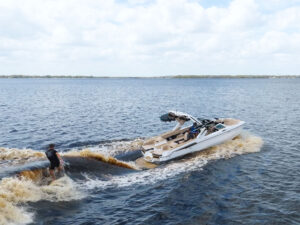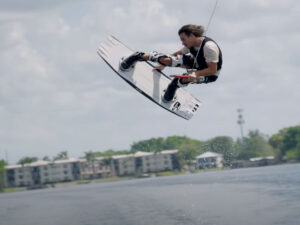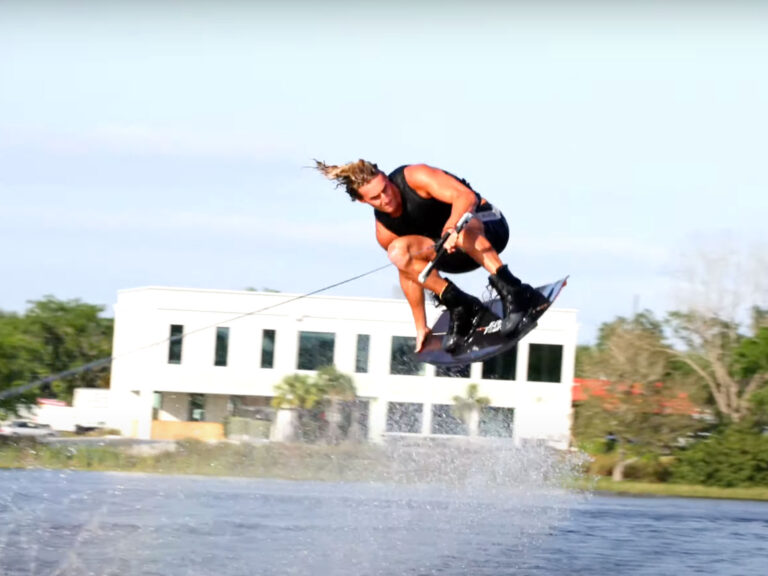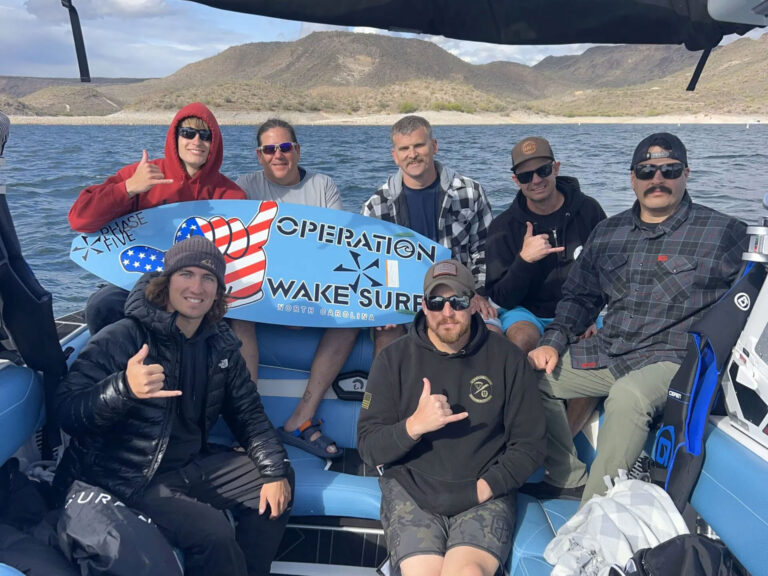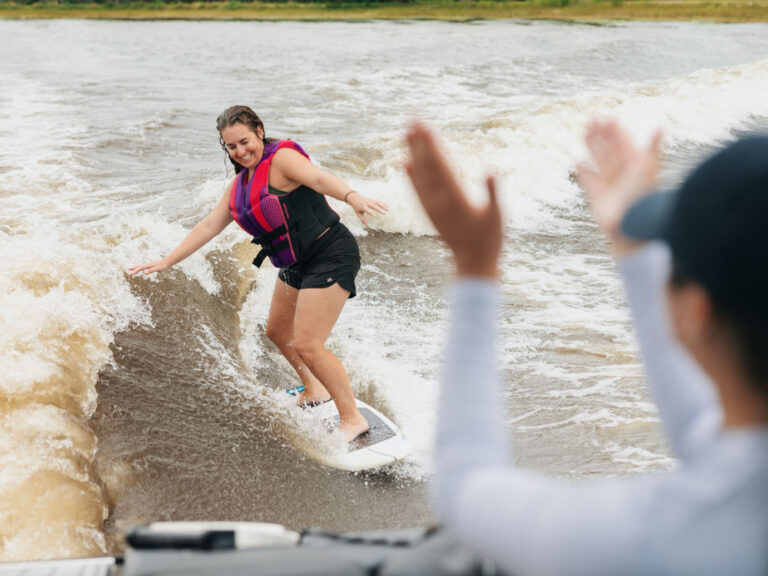In our May 2013 Issue, we provided you with a “How To” with Oli Derome that was quite impressive. This article is one that universally applies to all riders. Regardless if you remember seeing it in last May’s issue, it’s time to review it again as we enter the 2014 season. Keep improving out there folks!
How-To: Master All – A guide to being an all-round rider with Olivier Derome
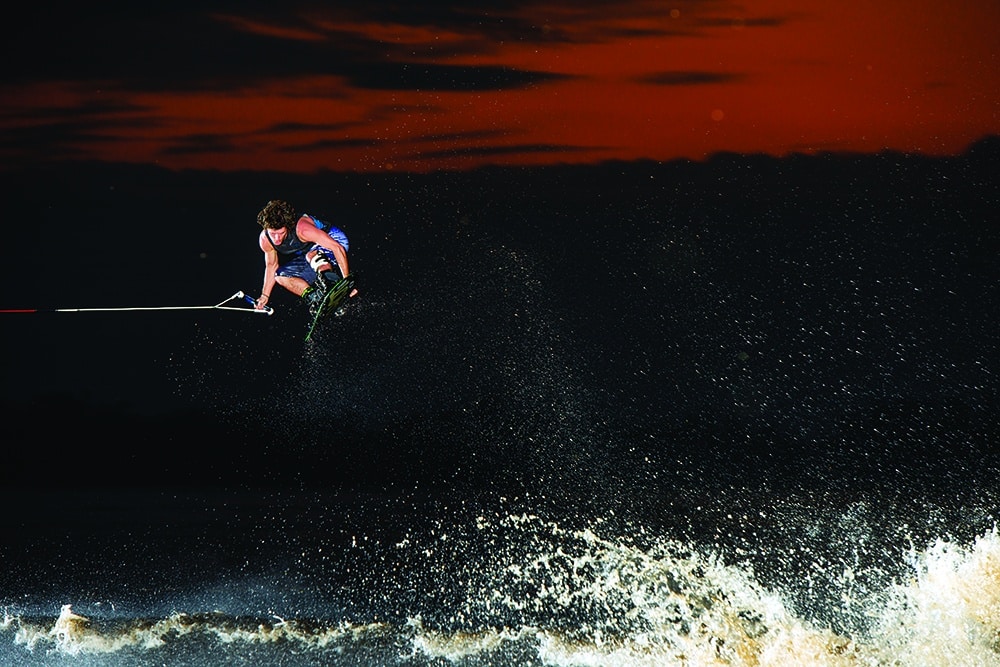
Words: Ben Greenwood
Photos: Bill Doster
With the ever-changing face of wakeboarding at a professional level, the riders who push the ceiling higher and higher are the ones who focus on all disciplines within wakeboarding. Wake mastery, rail proficiency, cable competence and a deep bag of kicker tricks are what today’s pros strive to obtain. As a predictable result, the riders who are at the top level in one or two areas have been able to adapt and progress in all areas. Be it handle control, aerial awareness, board control, strength building or general muscle memory, time on the water in one discipline will help with all disciplines.
Olivier Derome is one of the select few riders out there right now who can hang with anyone, anywhere, in every discipline. It only made sense that we hear straight from the utility man’s mouth what helps him carry out his wide variety of tricks in the vast arena of wakeboarding. Oli reminds us that free-riders and competition junkies can benefit from diversifying their skill sets. That’s coming from the man who has both games dialed.

WAKE RIDING
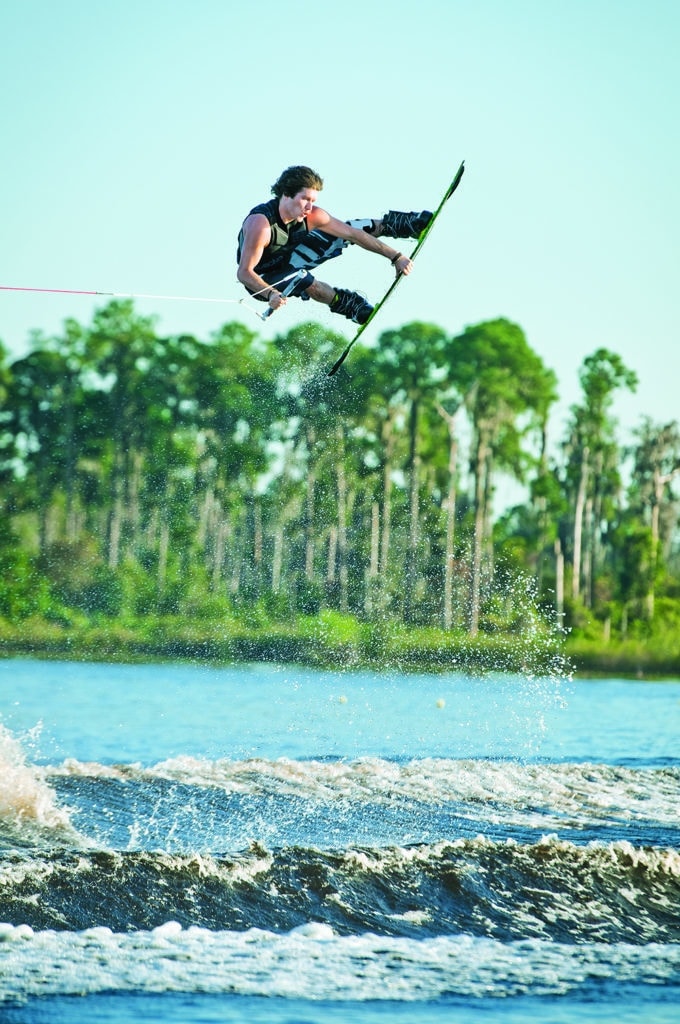
Oli’s first and anchoring thought when approaching boat riding is to make things easier and more efficient. “The less work required, the better,” says the former Canadian national champion. In relation to the setup, he likes to use the outside of the wake as a point of origin. “From here, simply edge out to a distance that will give you enough time to create enough speed to have a good wake-to-wake jump,” he says. This basic step can help give consistency to your approach and, in turn, the trick you are doing.
Oli puts an emphasis on a proper, simple approach: “For heelside, it is very similar to sitting in a chair: back straight, knees bent with your arms tight to ribs at hip height with shoulders leaning slightly back against the rope. On a toeside approach, think of leaning against the handle as if it was a harness across your body while still keeping your knees bent and back straight.”
The approach and edge help Oli accelerate toward the wake and, depending on the family of trick you are doing (spin, trip flip, etc.), the edge is built accordingly. At takeoff, Oli reminds us: “Utilize the entire wake; think about riding your board all the way through to the tail. This makes you patient and able to ride your board to the top of the wake.”
The pop can be tough to manage for some beginner riders, so Oli refers to it as a “push” off the top of the wake and not a “jump.” Upon achieving maximum pop, the line tension you have built up has a tendency to want to pull you of off your axis. “Keep a solid body position, anticipate this pull and go for a grab as you initiate the trick,” he says. “It can help you to keep your hips in the right spot or from breaking at the waist too much.”
Oli stresses, “Going for a trick too early will cause you to get hung up and lose line tension. The majority of the trick happens after the peak of the trick, on the way down.”

RAIL HITS
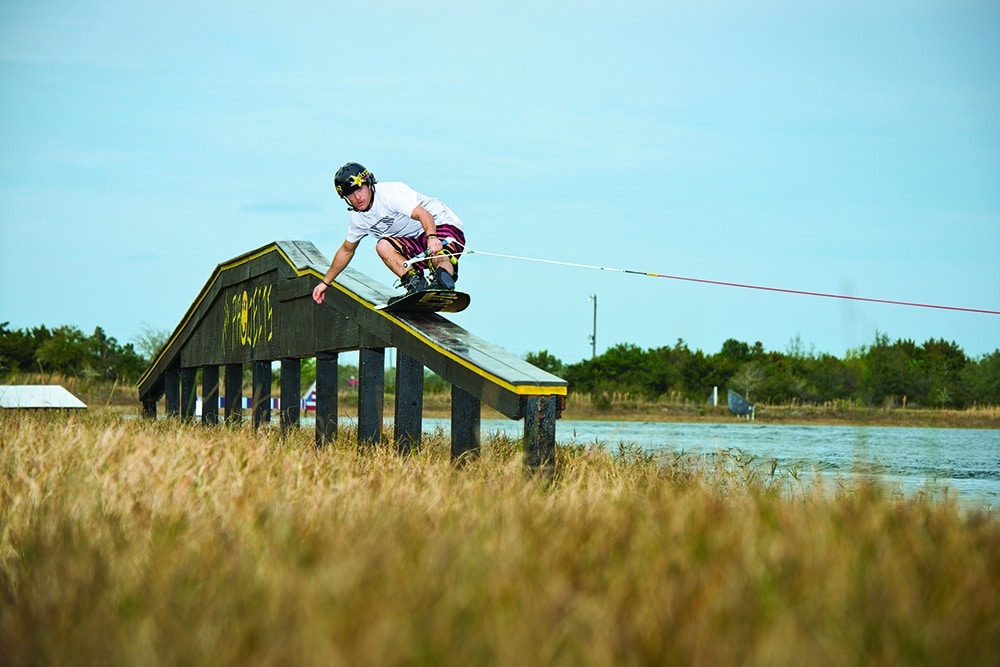
“Just like a wake trick, the approach is the foundation; a proper one will always give better results,” Oli emphasizes. He draws the parallel relating to the starting “neutral zone” just to the outside of the wake (if behind a boat or PWC) or under the cable (at the park or two-tower system). Regardless of the type of rail hit, Oli starts in the same spot, then about 40 to 50 feet before the rail, he initiates a light edge or drift and points his board slightly at the rail. “The word edging makes people want to rip into it,” Oli says. “Gliding or drifting into the rail is a proper approach, and it keeps it more mellow.”
When getting onto the rail by riding up an incline or initiating your ollie, “do not pull or jerk the handle,” says Oli. “This is why many riders come in one-handed. Make sure you pop a straight-up ollie, square off of your tail, especially if you are spinning onto the rail.” Having an idea of the exact trick you want to do across the rail helps get into the right positions, but as Oli says, “improvising on rails has led to a diversity of new tricks and combos.”
Oli tries to keep the handle centered at waist height and his chest upright with his head up to stay on the rail and remain balanced all the way across for the full pull. When advancing into more tech presses, his shoulders lean in the direction of the press, keeping weight over the balance point of the press. He points out, “The closer to the tip, the harder the press.”
If you want to progress your rail riding, make a conscious effort to try a new trick each time out, whether it is a new press, combo, switch or adding a 180 on or off. “Diversity is key to progression,” states Oli. “Creativity and progression go hand-in-hand, so keep learning and let yourself get inspired by other riders and other sports.”

KICKERS
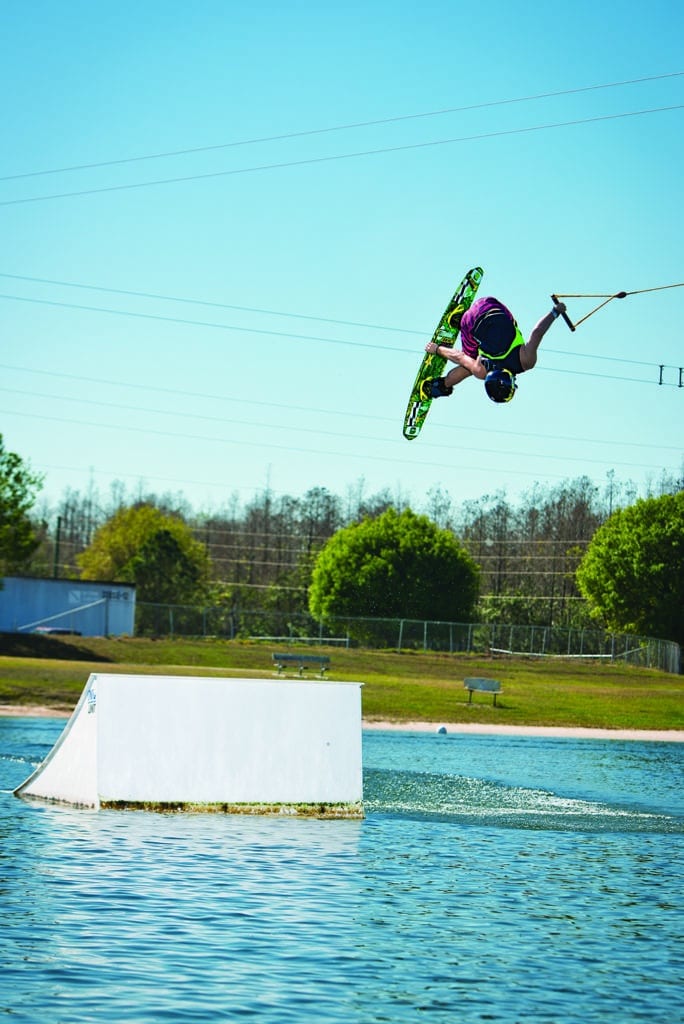
Not surprisingly, Oli points to the approach into a kicker as a very important step. He says, “Unless you are boosting as big as you possibly can, there is no point in starting much wider than underneath the cable or just to the outside of the wake.” Oli likes to visualize a pendulum as the trajectory he is taking into and off the top of the kicker, keeping the same angle all the way in until the bottom of the kicker, where he flattens off on the sliding surface. A good way to think about it is if you are approaching a kicker that is off to your right side, aim for the bottom left quadrant of the kicker as your entry point and the top right quadrant as your exit point.
Much like pushing off the wake, Oli encourages you, “to time your explosion at the very top of the kicker with your elbows tight into your rib area.” Continue to the outside and keep your same trajectory off the top.
Once off the top, Oli points out where kicker tricks differ from wake tricks, “You can initiate any trick right off the top, rather than waiting until the peak when behind the boat.”
“If you are doing a rotation, you will most likely need to pull on the tension off the ramp and two-thirds of the way throughout the spin,” he says. “This same tension also allows you to stall out tricks differently than on the boat, which gives you the opportunity to grab and poke in the middle of the trick.”
Oli indicates that the more speed you carry into your landing, the softer it will be, “so exactly as with wake riding, upon landing, try to keep your momentum going to the outside.”
